Mother Nature is full of surprises. Some places always have sunny skies or regular rain, but others can never be too sure what the weather will do next. In these unpredictable spots, guessing the weather is the best anyone can do. Let’s take a look at some of the world’s most variable climates, where being ready for anything is part of the daily excitement.
1. The Great Plains of North America: Record-Breaking Temperatures and Storms
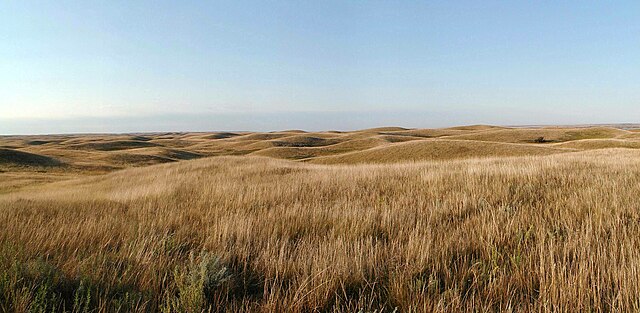 Source: USFWS Mountain-Prairie, CC BY 2.0, via Wikimedia Commons
Source: USFWS Mountain-Prairie, CC BY 2.0, via Wikimedia Commons
Imagine a land where blistering summers give way to bone-chilling winters, all within the same year. The Great Plains of North America, stretching from the Rocky Mountains to the Mississippi River, are notorious for their dramatic temperature swings. Summer sun can scorch the earth with high temperature reaching 110°F (43°C), while winter’s icy grip can plunge thermometers down to a teeth-chattering -40°F (-40°C). This dramatic shift is caused by the lack of geographical barriers, allowing air masses to sweep freely across the vast plains.
But the unpredictability doesn’t stop there. The Great Plains are a breeding ground for some of the most extreme weather phenomena on the planet.
Tornadoes
Tornadoes touch down here more frequently than anywhere else in the world. For example, in 1955, a severe tornado outbreak hit the Great Plains in the southern and central United States. This event happened on May 25th and 26th and was one of the deadliest of its time. It unleashed at least 47 tornadoes across seven different states.
 Source: National Archives and Records Administration, via Wikimedia Commons
Source: National Archives and Records Administration, via Wikimedia Commons
Extratropical Cyclones
The area of Southeastern Colorado, along with the nearby regions of Texas and Oklahoma, is known for creating extratropical cyclones. These extra tropical cyclone systems are responsible for a lot of local weather, from rain and snowfall to thunderstorms and gusty winds.
2. The Monsoon Coasts of Asia: A Seasonal Drenching
While the Great Plains deal with extremes of temperature, the monsoon coasts of Asia experience a different kind of unpredictability centered around water. These regions, stretching from India and Southeast Asia to parts of China and Japan, are dominated by the monsoon winds, which reverse direction twice a year.
During the summer monsoon, these powerful winds carry warm, moist air from the Indian Ocean, unleashing torrential downpours that can last for months. Rivers overflow, lush greenery explodes, and life flourishes under the heavy rain.
However, the arrival and intensity of the monsoon season can be highly unpredictable. Droughts can occur when the rains fail to arrive on schedule, leading to crop failures and water shortages. Conversely, heavy rainfall can trigger devastating floods that displace communities and cause widespread damage.
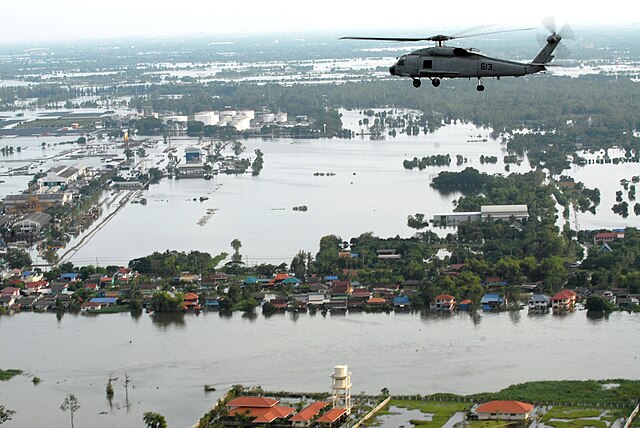 Source: U.S. Navy, via Wikimedia Commons
Source: U.S. Navy, via Wikimedia Commons
The flip side of the coin arrives with the winter monsoon. These dry winds blow from the interior of Asia, bringing cooler temperatures and a significant drop in rainfall. The landscape transforms from a waterlogged paradise to a parched terrain, highlighting the dramatic shift in weather patterns.
Living on a monsoon coast requires a deep understanding of these seasonal changes. Farmers time their planting and harvesting based on the monsoonal cycle, while communities prepare for both the life-giving rains and the potential dangers of floods.
3. The British Isles: One of the Most Unpredictable Climates on Earth
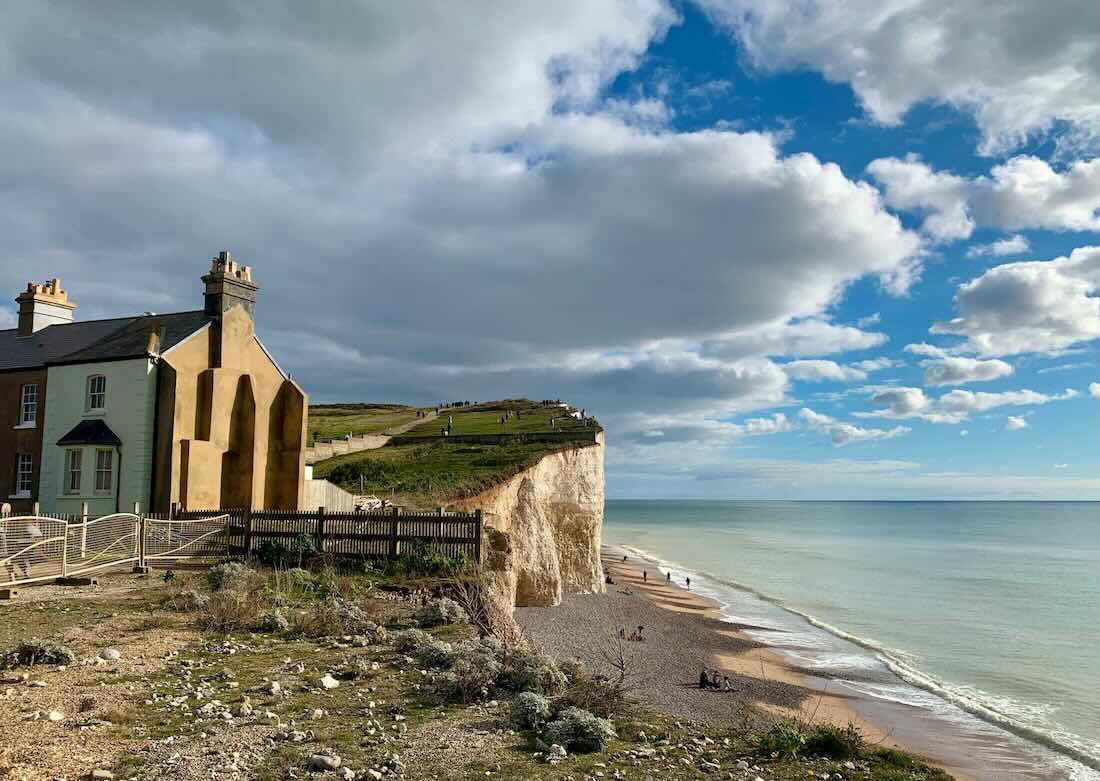 Source: Photo by Tianyu Zhao from Pexels
Source: Photo by Tianyu Zhao from Pexels
The temperamental nature of the British weather is legendary. One moment you might be basking in the sunshine, and the next, a downpour transforms the streets into mini rivers. The reason for this unpredictable weather is the North Atlantic Drift. It’s a warm current in the Atlantic Ocean that makes the weather milder and brings damp air to the British Isles.
However, this current is constantly in battle with colder air masses from the north, resulting in one of the world’s most variable climates. One day you might wake up to a crisp, clear morning, only to find yourself bundled up in a raincoat by lunchtime.
Despite the unpredictability, the British Isles generally experience mild winter weather and cool summers. However, the occasional “polar vortex” can bring a blast of arctic air, while extreme heat wave events, though less common, can send temperatures soaring.
4. The Mediterranean Basin: Sunny Days with a Side of Fury
The Mediterranean weather and climate are often romanticized for its warm, sunny summers and mild winters. However, this seemingly idyllic region can unleash some extreme weather events. One such phenomenon is the “medicane,” a powerful storm similar to a hurricane that forms over the warm Mediterranean Sea. These storms can bring torrential downpours, high winds, and flash flooding, transforming a tranquil coastline into a raging tempest.
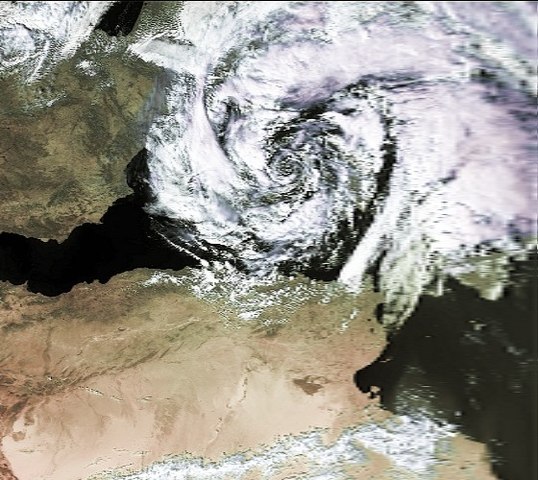 Source: NOAA / Satellite and Information Service, Public domain, via Wikimedia Commons
Source: NOAA / Satellite and Information Service, Public domain, via Wikimedia Commons
Another surprise element is the “sirocco,” a hot, dry wind originating in the Sahara Desert. The sirocco can bring sudden spikes in temperature, turning a pleasant day into a sweltering ordeal.
5. The Patagonian Steppe: Extreme Weather and High Winds
The Patagonian Steppe, a vast, semi-arid region at the southern tip of South America, is a land sculpted by wind. Here, the fierce westerly winds blowing from west to east whip across the barren plains, creating a constant state of flux. Days can be calm and clear, but a sudden shift in wind patterns can transform the landscape into a dust storm, engulfing everything in a swirling vortex of sand and grit. NASA scientists compare these dust storms to those occurring on Mars.
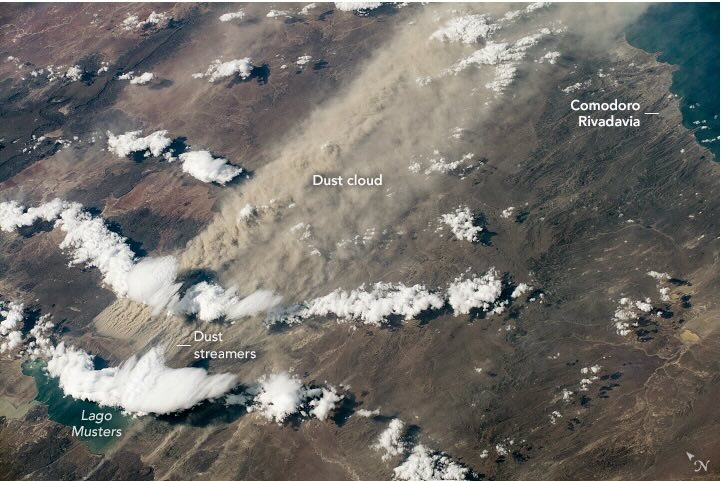 Source: NASA Earth Observatory
Source: NASA Earth Observatory
Precipitation in Patagonia is scarce and unpredictable. Long periods of drought can be punctuated by sudden downpours that cause flash flooding. While summers can be mild, winters are harsh, with strong winds and occasional winter storm events. Life in Patagonia requires a deep respect for the power of the wind and the ability to adapt to rapidly changing and extreme weather conditions.
Living with the Unpredictable Weather Patterns
The regions discussed above represent just a sample of the many unpredictable climates in several places on Earth. From the temperature changes in the Great Plains to the monsoon rains in Asia, these areas showcase the never-ending climate variability.
For those who call these unpredictable regions home, life is an ongoing adventure. Residents develop a keen awareness of unusual weather patterns, learning to read the subtle signs that foreshadow change. They invest in versatile clothing, prepare for severe weather events, and maintain a sense of adaptability. In these ever-changing landscapes, resilience and resourcefulness become essential traits.
The unpredictable climates also hold a certain allure. For weather enthusiasts and storm chasers, they offer a constant challenge and a never-ending source of fascination. The thrill of witnessing a sudden storm or the surprise of a rare weather phenomenon keeps these regions exciting and dynamic.
For more information on severe weather events, check our blog post 2023 Severe Weather Overview.






